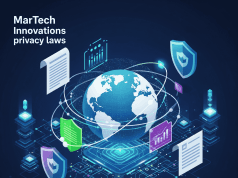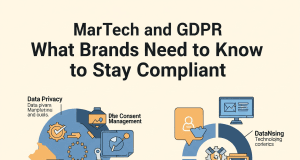In an age where data breaches and privacy concerns dominate the digital landscape, the Digital Personal Data Protection Act (DPDPA) 2023 has emerged as a crucial legal framework. This comprehensive guide will explore the key features of the DPDPA, its implications for individuals and organizations, and the broader context of data protection in today’s world.
1. Overview of the DPDPA 2023
The Digital Personal Data Protection Act 2023 was enacted to regulate the processing of personal data in a digital environment. It aims to protect individuals’ rights concerning their data and establish clear responsibilities for data processors and controllers. Understanding the nuances of this legislation is essential for anyone whose work involves handling personal data.
2. Key Definitions
Personal Data
Personal data encompasses any information that can identify an individual, whether directly (e.g., name, email) or indirectly (e.g., IP addresses, cookie identifiers).
Data Controllers and Processors
- Data Controllers: Entities that determine the purpose and means of processing personal data.
- Data Processors: Organizations that process data on behalf of a data controller.
3. Core Principles of the DPDPA
The DPDPA establishes several key principles designed to protect personal data:
a. Purpose Limitation
Data should be collected only for specified, legitimate purposes and not further processed in ways incompatible with those purposes.
b. Data Minimization
Only the data necessary for achieving the specific purposes should be collected.
c. Accuracy
Organizations must ensure that personal data is accurate and up to date, providing mechanisms for corrections.
d. Storage Limitation
Personal data should not be kept longer than necessary for the purposes for which it was processed.
e. Security Safeguards
Adequate security measures must be implemented to prevent unauthorized access, loss, or destruction of personal data.
4. Rights of Individuals
The DPDPA grants individuals several rights concerning their personal data:
a. Right to Access
Individuals have the right to know whether their personal data is being processed and to access that data.
b. Right to Rectification
Individuals can request corrections to inaccurate or incomplete data.
c. Right to Erasure
Also known as the "right to be forgotten," individuals can request the deletion of their data under certain circumstances.
d. Right to Data Portability
Individuals have the right to receive their personal data in a structured, commonly used, and machine-readable format and can request its transfer to another service.
e. Right to Object
Individuals can object to the processing of their data, particularly in cases of direct marketing.
5. Compliance Obligations for Organizations
Organizations must adhere to various compliance obligations under the DPDPA:
a. Data Processing Agreements
Contracts must be established between data controllers and processors to ensure compliance with the Act.
b. Data Protection Impact Assessments
Organizations must conduct risk assessments for processing activities that could negatively affect individuals’ rights.
c. Data Breach Notifications
Organizations must notify relevant authorities and affected individuals in the event of a data breach that poses a risk to individuals’ rights.
6. Enforcement and Penalties
The DPDPA empowers designated authorities to enforce compliance. Organizations that fail to adhere to the regulations could face significant fines, the severity of which typically reflects the nature of the violation.
7. Broader Context and Future Implications
With the DPDPA, India joins a global movement toward stronger data protection, inspired by regulations such as the EU’s General Data Protection Regulation (GDPR). As digital interactions continue to grow, organizations must prioritize data protection in their operations, embracing transparency and accountability.
8. Conclusion
The Digital Personal Data Protection Act 2023 is a significant step toward safeguarding individuals’ personal data in an increasingly digital world. By understanding its principles and implications, individuals and organizations can better navigate the evolving landscape of data privacy and protection. Compliance is not merely a legal obligation; it is essential for building trust and fostering a culture of respect for personal data in the digital era.









